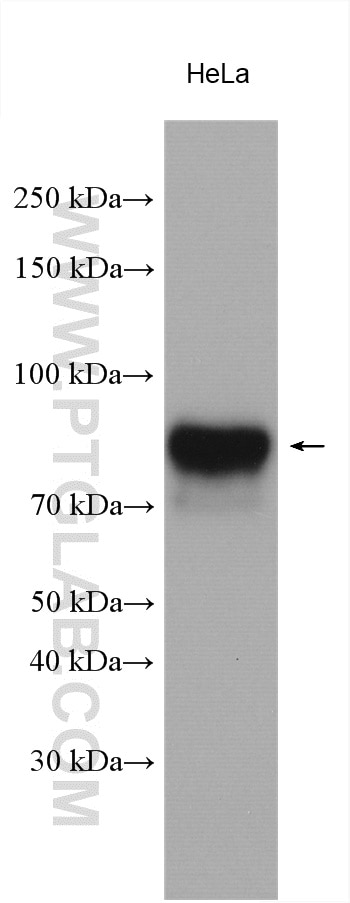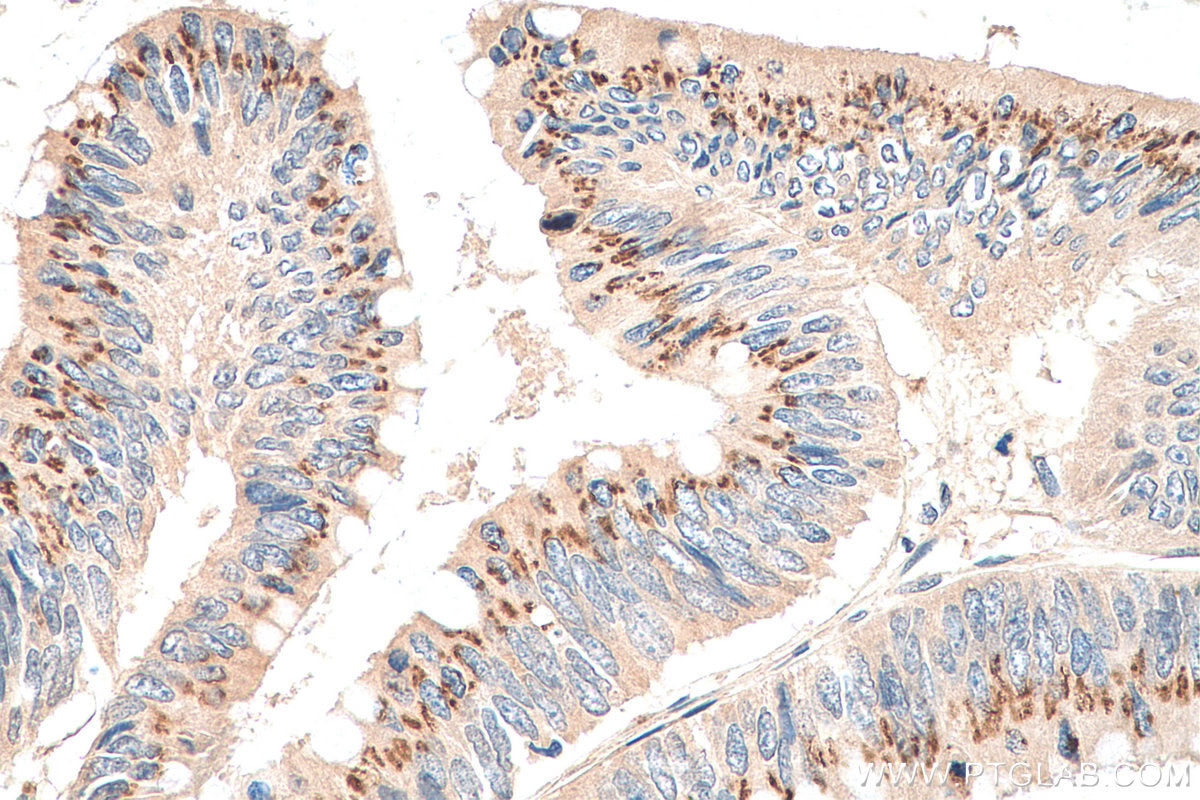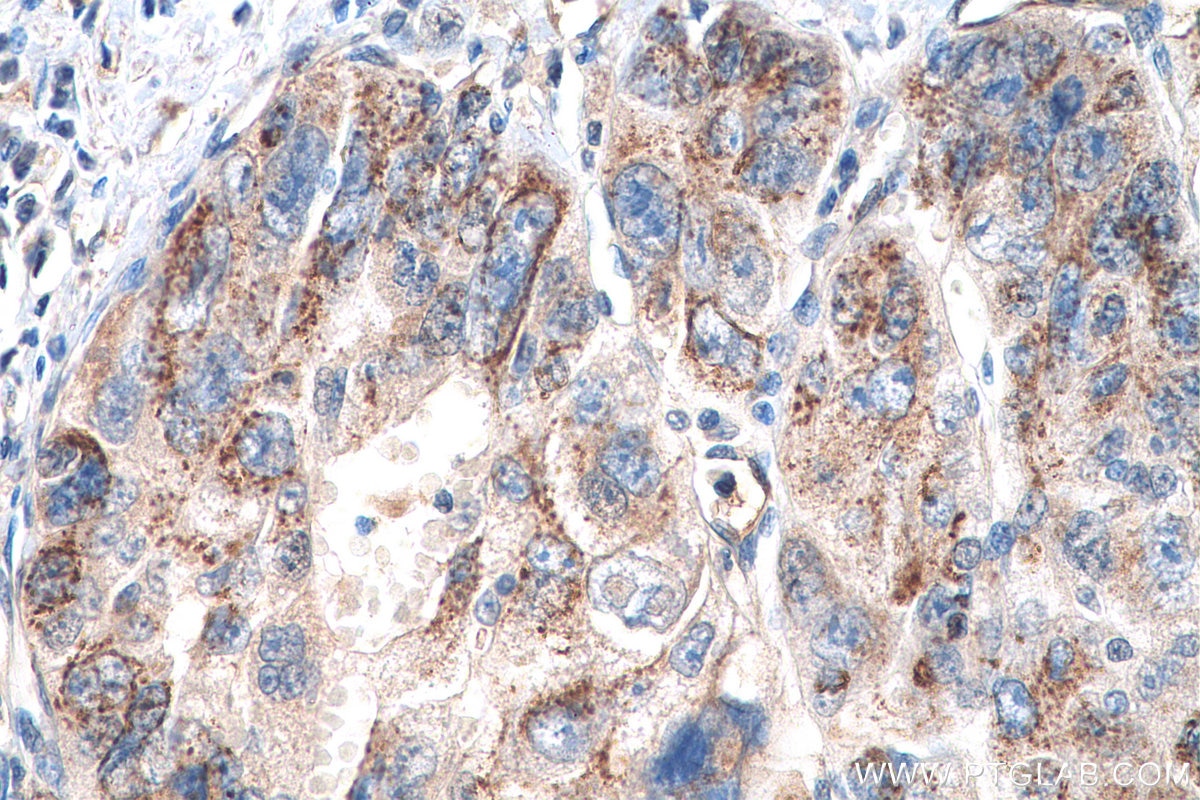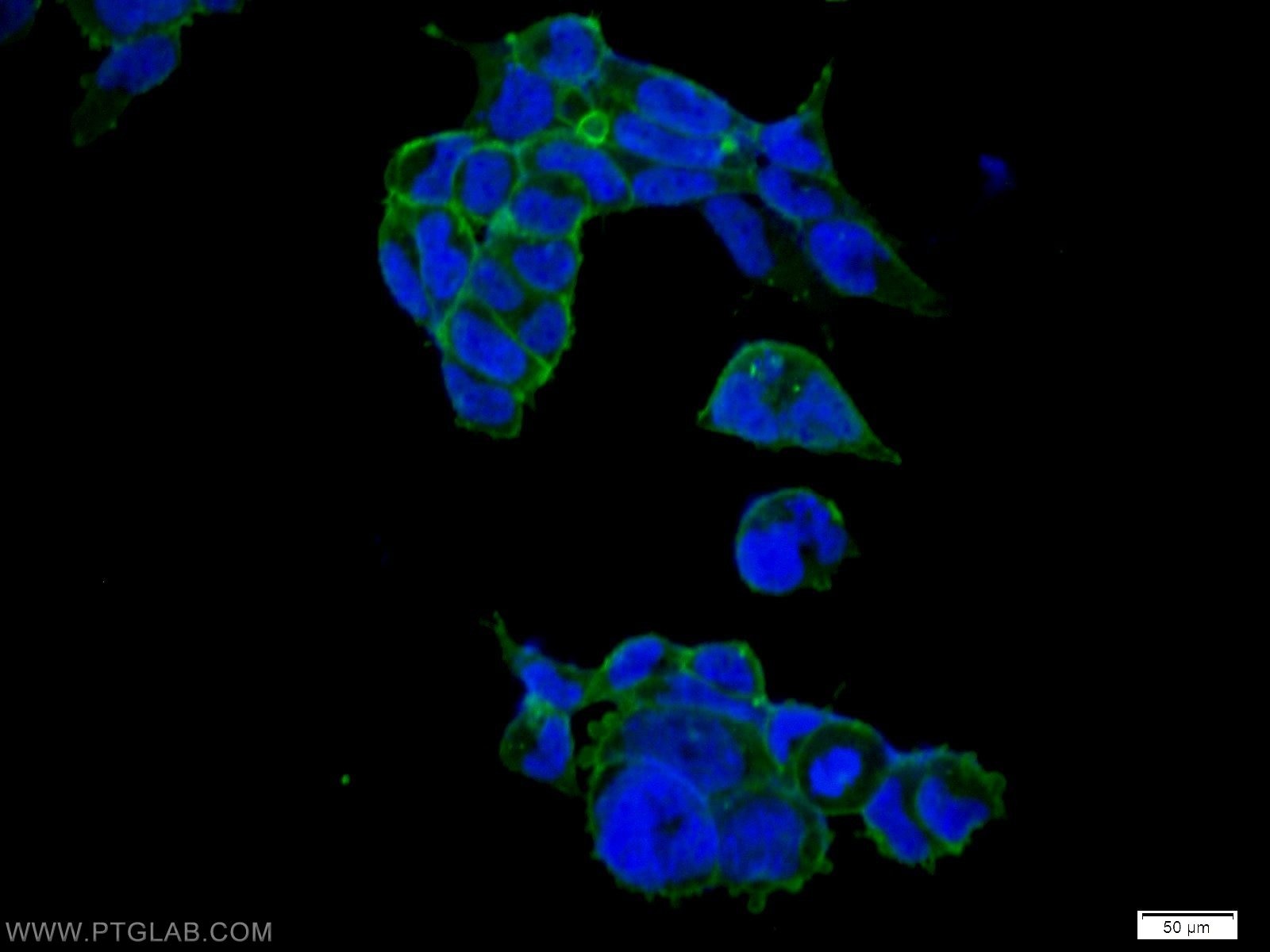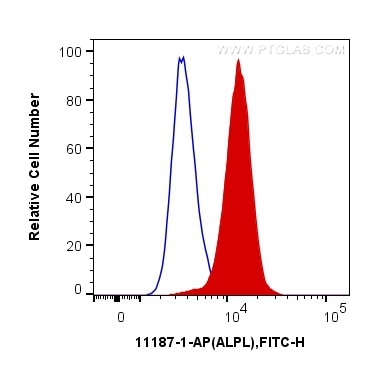Anticorps Polyclonal de lapin anti-ALPL
ALPL Polyclonal Antibody for WB, IHC, FC (Intra), ELISA
Hôte / Isotype
Lapin / IgG
Réactivité testée
Humain
Applications
WB, IHC, FC (Intra), chIP, ELISA, IF
Conjugaison
Non conjugué
N° de cat : 11187-1-AP
Synonymes
Galerie de données de validation
Applications testées
| Résultats positifs en WB | cellules HeLa, |
| Résultats positifs en IHC | tissu de cancer du côlon humain, tissu de cancer du foie humain il est suggéré de démasquer l'antigène avec un tampon de TE buffer pH 9.0; (*) À défaut, 'le démasquage de l'antigène peut être 'effectué avec un tampon citrate pH 6,0. |
| Résultats positifs en FC (Intra) | cellules HeLa, |
Dilution recommandée
| Application | Dilution |
|---|---|
| Western Blot (WB) | WB : 1:500-1:2000 |
| Immunohistochimie (IHC) | IHC : 1:50-1:500 |
| Flow Cytometry (FC) (INTRA) | FC (INTRA) : 0.20 ug per 10^6 cells in a 100 µl suspension |
| It is recommended that this reagent should be titrated in each testing system to obtain optimal results. | |
| Sample-dependent, check data in validation data gallery | |
Applications publiées
| KD/KO | See 1 publications below |
| WB | See 38 publications below |
| IHC | See 19 publications below |
| IF | See 5 publications below |
| ChIP | See 1 publications below |
Informations sur le produit
11187-1-AP cible ALPL dans les applications de WB, IHC, FC (Intra), chIP, ELISA, IF et montre une réactivité avec des échantillons Humain
| Réactivité | Humain |
| Réactivité citée | Humain |
| Hôte / Isotype | Lapin / IgG |
| Clonalité | Polyclonal |
| Type | Anticorps |
| Immunogène | ALPL Protéine recombinante Ag1664 |
| Nom complet | alkaline phosphatase, liver/bone/kidney |
| Masse moléculaire calculée | 57 kDa |
| Poids moléculaire observé | 80 kDa |
| Numéro d’acquisition GenBank | BC021289 |
| Symbole du gène | ALPL |
| Identification du gène (NCBI) | 249 |
| Conjugaison | Non conjugué |
| Forme | Liquide |
| Méthode de purification | Purification par affinité contre l'antigène |
| Tampon de stockage | PBS avec azoture de sodium à 0,02 % et glycérol à 50 % pH 7,3 |
| Conditions de stockage | Stocker à -20°C. Stable pendant un an après l'expédition. L'aliquotage n'est pas nécessaire pour le stockage à -20oC Les 20ul contiennent 0,1% de BSA. |
Informations générales
There are at least four distinct but related alkaline phosphatases: intestinal, placental, placental-like, and liver/bone/kidney (tissue non-specific). The product of this gene is a membrane bound glycosylated enzyme that is not expressed in any particular tissue and is, therefore, referred to as the tissue-nonspecific form of the enzyme. ALPL(Alkaline phosphatase, tissue-nonspecific isozyme) is also named as AP-TNAP, TNSALP and belongs to the alkaline phosphatase family. It can exsit as a homodimer with the molecular weight of 140 kDa(PMID:18724009). ALPL was synthesized as a 66-kDa endo-b-N-acetylglucos-aminidase H (Endo H)-sensitive form, and processed to an 80-kDa mature form, which is anchored to the plasma membrane via glycosylphosphatidylinositol (GPI)(PMID:10839996).This antibody can bind the four mentioned alkaline phosphatases.
Protocole
| Product Specific Protocols | |
|---|---|
| WB protocol for ALPL antibody 11187-1-AP | Download protocol |
| IHC protocol for ALPL antibody 11187-1-AP | Download protocol |
| IF protocol for ALPL antibody 11187-1-AP | Download protocol |
| FC protocol for ALPL antibody 11187-1-AP | Download protocol |
| Standard Protocols | |
|---|---|
| Click here to view our Standard Protocols |
Publications
| Species | Application | Title |
|---|---|---|
Mol Ther Nucleic Acids Circular RNA circSmoc1-2 regulates vascular calcification by acting as a miR-874-3p sponge in vascular smooth muscle cells. | ||
Virol Sin Establishment and characterization of a new cell culture system for hepatitis B virus replication and infection. | ||
J Cell Physiol Cell dynamics in Hertwig's epithelial root sheath are regulated by β-catenin activity during tooth root development. | ||
ACS Biomater Sci Eng Polydopamine-Coated Poly(l-lactide) Nanofibers with Controlled Release of VEGF and BMP-2 as a Regenerative Periosteum. | ||
Front Cell Dev Biol IL-18-Mediated SLC7A5 Overexpression Enhances Osteogenic Differentiation of Human Bone Marrow Mesenchymal Stem Cells via the c-MYC Pathway. |
Avis
The reviews below have been submitted by verified Proteintech customers who received an incentive forproviding their feedback.
FH Charlotte (Verified Customer) (07-25-2024) | I tested the antibody with the following protocol. The most intense band corresponds to ALP. There is a lot of background. Maybe cell line specific as C3H10T1/2 cells are differentiating into the osteoblast lineage upon stimulation ? Blocking 1h in 5% milk in TBST primary incubation 1/1000 in blocking solution, O.N. at 4°C wash 5*5min TBST secondary incubation 1/5000 in blocking solution, 1h at RT° wash 4*5min PBST + 5min PBS
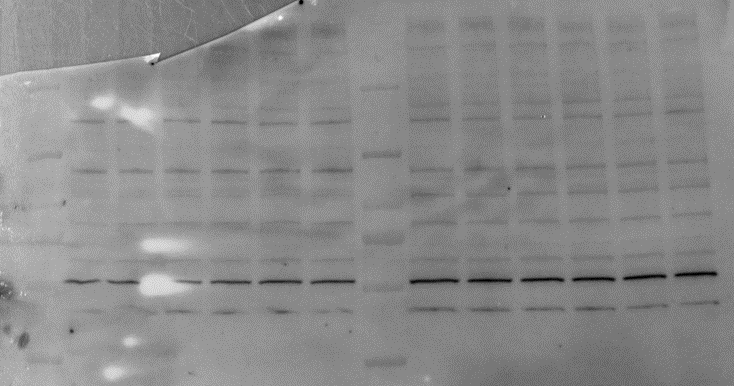 |
FH CHAO (Verified Customer) (03-31-2022) | Weak bands may due to tissue specificity
|
FH LUNFENG (Verified Customer) (01-27-2020) | GOOD
|
FH Jie (Verified Customer) (01-23-2020) | Smear band but with the right product size on western blot. Immunohistochemical staining showed desired results in control versus knockout mouse model
|
FH Jingwen (Verified Customer) (01-17-2020) | This antibody worked very well and showed the specific band around 70kDa in western blot.
|
